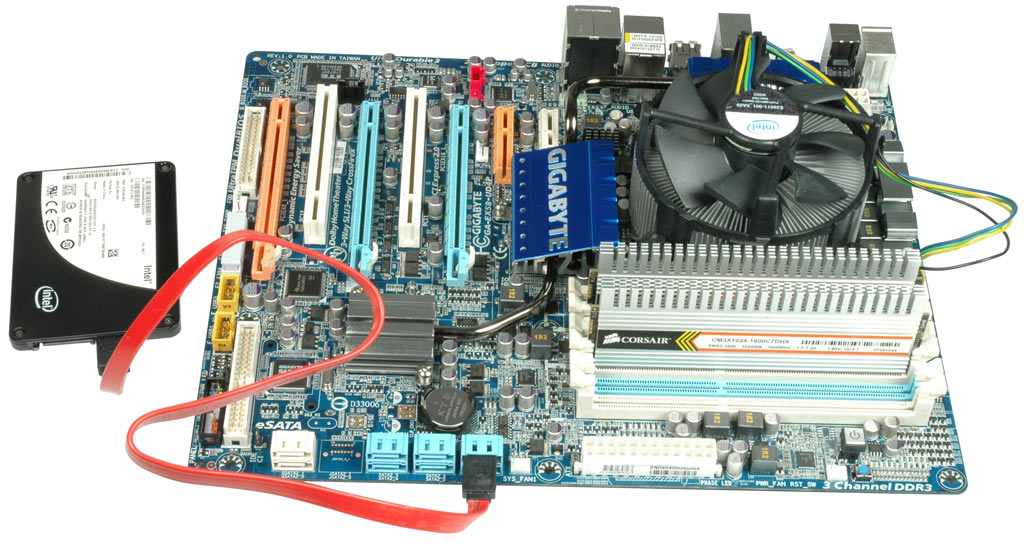Does Power-Saving Technology Kill SSD Performance?
Flash SSDs Can Suffer From Power Saving Features
We were in the middle of setting up a new storage test system to replace our aged platform when we noticed something really strange: Intel’s top-of-the-line X25-E flash solid state disk (SSD) delivered less throughput on the new test system than it did on the old one. It took us a few days to isolate the reason, and our findings are noteworthy, as they illustrate the first practical bottleneck for flash SSDs. Mainly, they cannot provide their maximum performance if you take advantage of processor and platform power saving features.
We further explored our findings by enabling and disabling various power saving options, using two X58 motherboards from Gigabyte and Supermicro.
Updating The Storage Testing Platform
We’ve been using our storage reference platform for more than four years, as it has allowed us to compare test results of drives and controllers since the introduction of the system. All hard drive tests, such as the recent budget drive roundup, our short stroking analysis or some testing on acoustic management, together with all tests for our 3.5” Desktop HDD charts, 2.5” Notebook HDD charts, Flash SSD charts and Enterprise HDD charts, were conducted on this platform. It was based on an Intel Xeon Nocona single-core processor with 3.6 GHz and 1 MB L2 cache (Prescott generation) and the E7520 server platform, which was the first to offer PCI-X and PCI Express. Both the platform and the storage controller—a Promise SATA 300TX4 controller—are rather outdated now, so we decided to switch to a Supermicro X8SAX and a Core i7 920 processor.
The Issue: Performance Numbers Were Off
The new system is fast, and it comes with the latest Intel ICH10R southbridge. But its throughput using our fastest SATA drive—an Intel X25-E enterprise flash SSD—was lower than on our old storage system. Instead of reaching 200 MB/s, the new Core i7 system was limited to 182 MB/s.
At this point, we have to underscore that the X25-E is capable of delivering 230 MB/s, and it was only limited to 200 MB/s on our prior storage reference system by the old controller. Since all of our tests were performed on this controller, results were comparable at all times, but this performance drop made us scratch our heads.
Get Tom's Hardware's best news and in-depth reviews, straight to your inbox.
Isolating The Performance Break
A BIOS update by Supermicro did not solve the issue, so we began our analysis by trying a second motherboard, which was a Gigabyte EX58-UD4P, so we could see whether or not the issue was related to the Supermicro motherboard. This wasn’t the cause, as the throughput on Gigabyte’s X58 motherboard was also somewhat bottlenecked. We measured a maximum read throughput of 186 MB/s; better, but still miles away from the expected 230 MB/s maximum. So we went on and disabled all unwanted components and BIOS features, until we were able to find the culprit: the bottleneck begins as soon as you start using processor and platform power saving features.
Current page: Flash SSDs Can Suffer From Power Saving Features
Next Page Power Saving Features Throttle Throughput